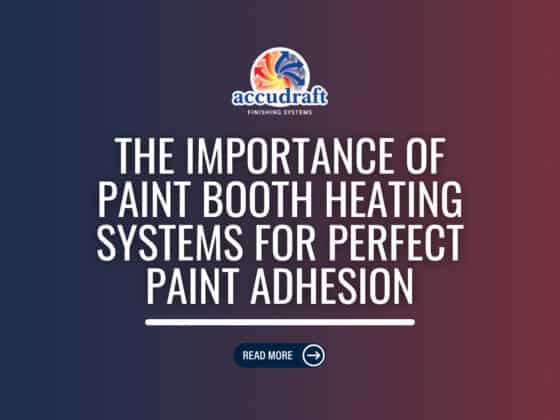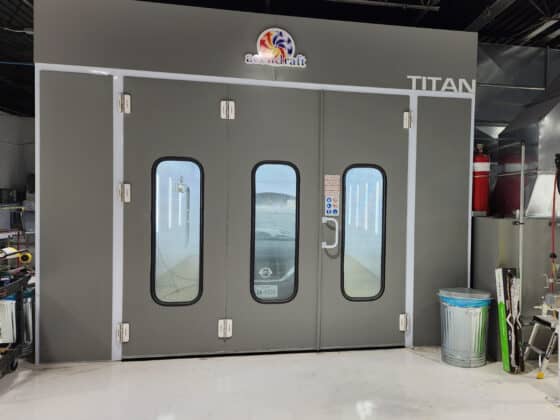The control system for a paint booth that utilizes advanced safeties, advanced filtration and precise control of the spray area has to be robust enough to withstand life in a paint shop and advanced enough to deliver repeatability in the conditions and performance of the booth. Generally the control system is designed for a particular booth to achieve the required specifications. Some specifications deal with the safeties, air flow, climate and other items that are characteristics of the booth but there are some other features that may be required of the controls such as data logging/reporting, BMS integration and interaction with the building fire alarms or other building safeties. The control systems used for these advanced booths are wide ranging in their particular configurations but they all have some common features.
The HMI (Human Machine Interface) is the point of interaction for the operator to “tell” the control system what it should do and also the place where the paint booth displays data about conditions, alarm status and other information that the operator needs. While smaller booths generally have one HMI, it is not uncommon for larger booths to have multiple HMIs spread along the outside for convenience and even HMIs at the air makeup units for maintenance technicians to use when diagnosing problems.
PLCs (Programmable Logic Controllers) are essentially computers that can be custom configured to allow the paint booth to operate as required. A PLC control setup allows the manufacturer to control what features the operator has access to, what information they can see at the HMI, alarm thresholds and all of the logic that keeps the booth operating at the correct conditions. The logic programmed into the PLC ultimately controls air volume (possibly varying air volume in different modes), percentage of recirculation, temperature, humidity, operational sequencing for alarm conditions.
Variable Frequency Drives (VFDs) allow the motors to be run at different speeds to maintain correct air flow in varying modes, overcome filter degradation, maintain the correct percentage of recirculated air versus fresh air and exhaust air as well as allowing for a much more energy efficient stopping and starting of motors/fans. The VFD or VFDs receive a signal from the PLC that dictates the time to start as well as what speed they should be operating at. Once the VFD has the signal it varies the voltage and frequency sent to the motor to achieve the correct result.
Placed all over the booth are sensors and safeties that monitor the actual conditions of the space and process. These items are constantly sending information to the PLC where it is processed and analyzed so the correct adjustments can be made to keep the system operating within specifications. The exact type and number of sensors or safeties will vary by application but the following is a list of the most common: cabin temperature, cabin humidity, high temperature limit safety, LEL monitor, VOC monitor, door switches, pressure sensors/switches, intake air temperature at amu and amu discharge air temperature.
On large and small paint booth applications, the controls of the paint booth are occasionally tied into the Building Management System (BMS). The BMS as a whole can control/monitor all aspects of a buildings operating conditions: lighting, pumps, hvac, security, fire alarms hot water plants, and cold water plants. Depending on the level of dependency required by the facility, the BMS connection for the paint booth can simply monitor the conditions at the booth but the most advanced systems can record data from the booth during processes and even control the operation of the paint booths or individual motors. Tying the paint booth control into a BMS system can be done for a number of reasons including safety, energy usage tracking, security and quality control but no matter the reason why, the integration of the paint booth controls to the BMS requires close coordination between the customer’s facilities team and our engineering group to make sure the appropriate provisions are made to accomplish the mission.














